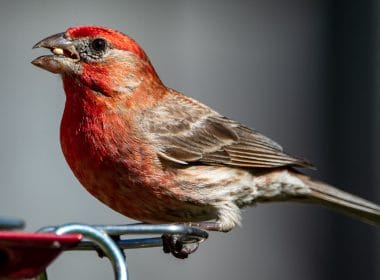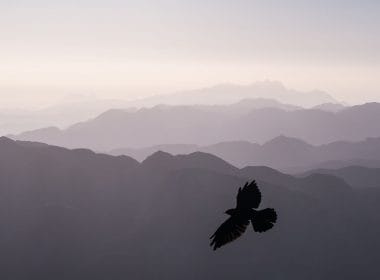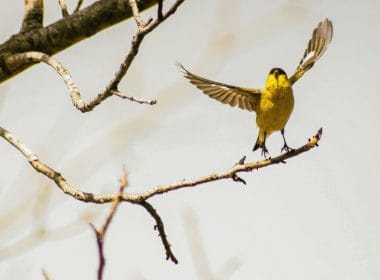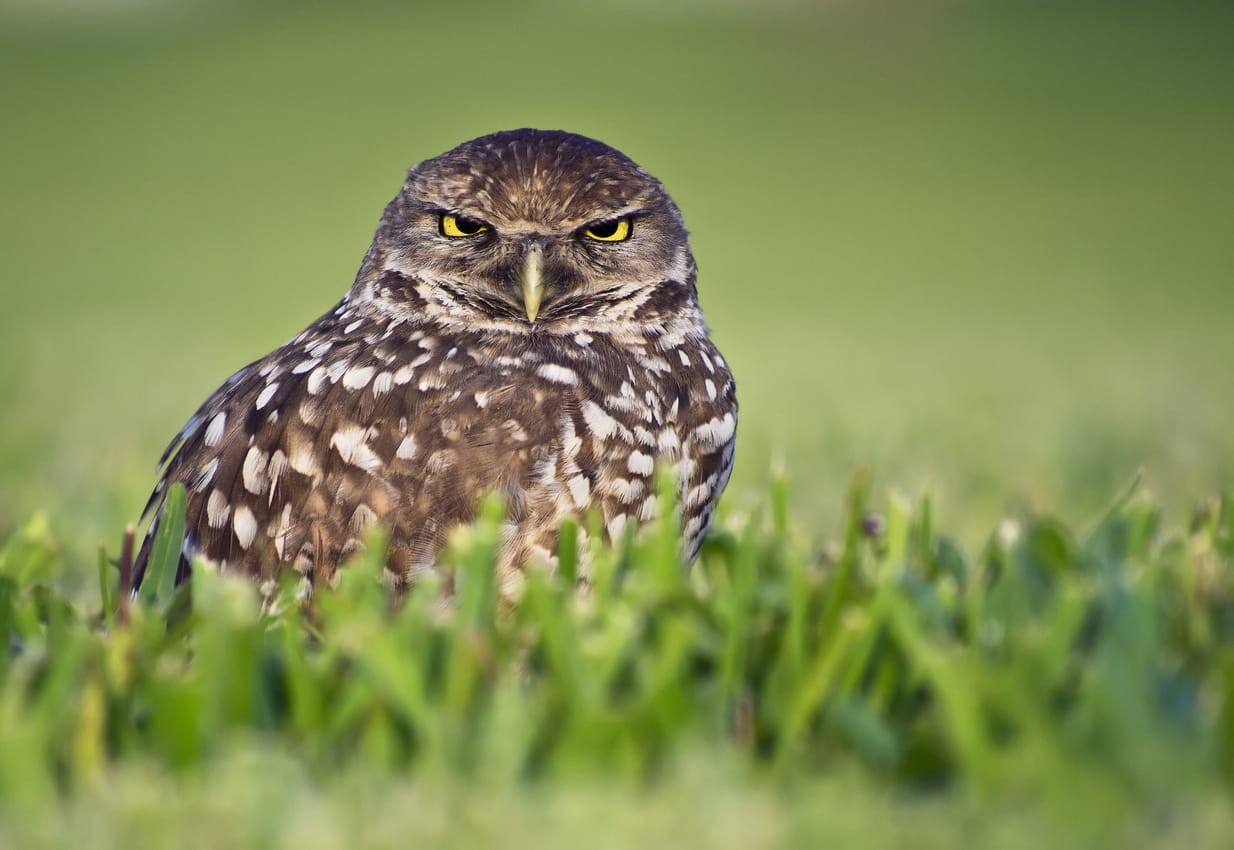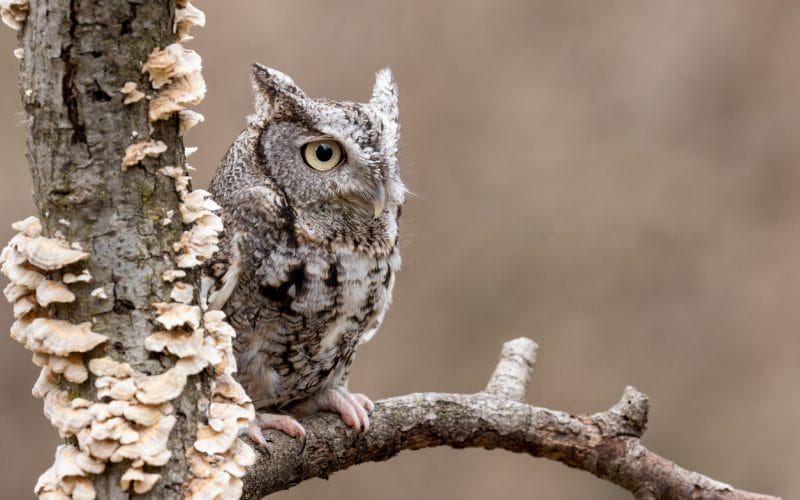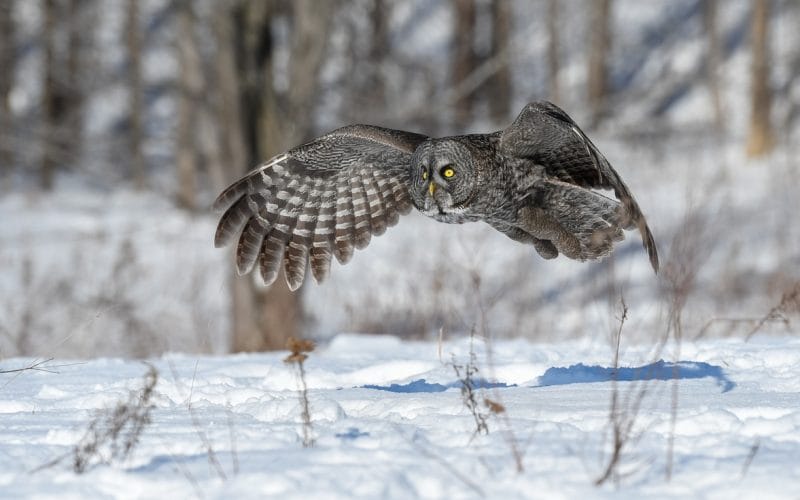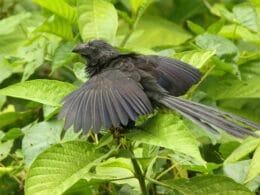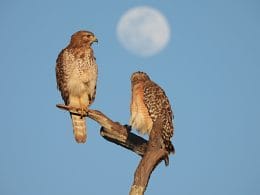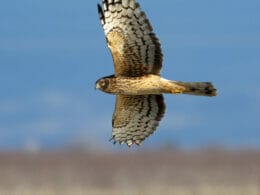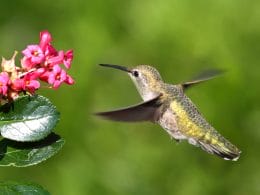Iowa has many forests, lakes, rivers, and streams. This makes it the ideal location for plenty of animals. More specifically, owls, since owls need plenty of space to fly around and hunt.
If you’re planning a trip to the Hawkeye State, here’s a guide on 9 majestic owls you might spot there.
1. Barn Owl
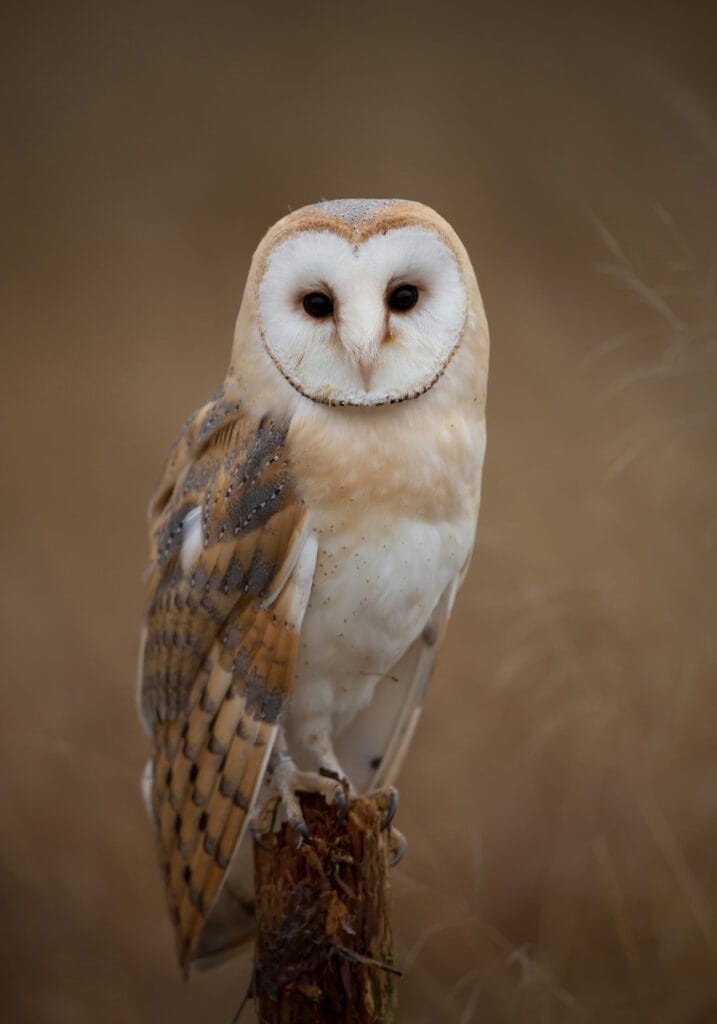
- Scientific name: Tyto alba
- Length: 14 to 20 inches
- Weight: 14 to 24 ounces
- Wingspan: 48 inches
- Average life span: 2 to 4 years
- Status: Endangered
The Barn Owl is a beautiful, golden-brown bird. It has dark, deep-set eyes, long legs, and striped feathers. If you’re looking for the Barn Owl, be on the lookout for a white, heart-shaped face.
Top Tip: Males are usually paler, with a more yellow-gold hue. And, unlike most other animals, the males are smaller than females.
Barn Owls mainly feed on small mammals, rats, mice, and sometimes small birds. To hunt, Barn Owls need plenty of open space. That’s why they like to be around meadows and farmland.
They’re also nocturnal hunters, which means they like to hunt at night. To help them hunt, Barn Owls have near-perfect night vision and an excellent sense of smell. And because of the shape of their feathers, they’re extremely quiet flyers.
Speaking of quiet, the Barn Owl doesn’t hoot. It can make a hissing noise that it uses for mating.
Like most birds of prey, Barn Owls are solitary creatures. They like to live alone until it’s mating time. After they find a mate, the owls in Iowa build nests in hollow trees, caves, or even abandoned barns. That’s why we call them Barn Owls.
When it’s time, a female Barn Owl can lay up to ten eggs, which take about 33 days to hatch. Then both parents feed the owlets until they can hunt on their own.
2. Burrowing Owl
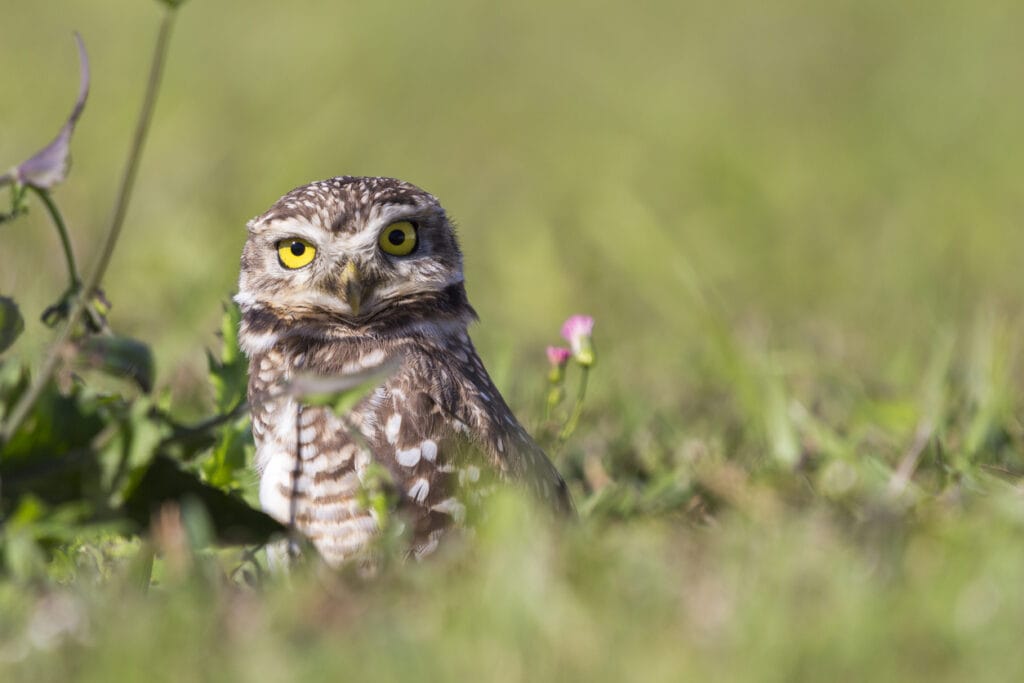
- Scientific name: Athene cunicularia
- Length: 8 to 11 inches
- Weight: 4 to 8 ounces
- Wingspan: 22 inches
- Average life span: 6 to 8 years
- Status: Declining population
Burrowing Owls have tiny frames and brown feathers with white speckles, long legs, and yellow eyes. Unlike most other birds, they prefer to spend most of their time on the ground.
That’s why Burrowing Owls have the longest legs of all the owls. They’re also one of few owls that can chase their prey on foot.
You can find them in Iowa, but rarely. They like to spend their time in open spaces with sparse trees.
Most owls are nocturnal, but the Burrowing Owl is diurnal, which means it can hunt in the morning and at night. Mostly, this owl feeds on mammals, insects, and other birds.
The reason behind their name is that—you’ve guessed it—they dig burrows.
When Burrowing Owls want to nest, they’ll dig small burrows into the ground. Sometimes they can take over other animals’ burrows.
Female Burrowing Owls will lay up to 12 eggs. After they hatch, the owlets will spend most of their time in the burrows.
The burrow is not just a cozy spot. If the owlets sense danger, they can hide underground and mimic the sound of a rattlesnake.
3. Great Horned Owl

- Scientific name: Bubo virginianus
- Length: 18 to 24 inches
- Weight: 32 to 88 ounces
- Wingspan: 57 inches
- Average life span: 15 to 25 years
- Status: Least concern
Great Horned Owls, also called ‘Tiger Owls,’ are one of the fiercest hunters on our list. They have sharp claws that they can use to catch rabbits, squirrels, and sometimes ducks.
These fearsome birds of prey are symbols of strength, courage, and beauty in many cultures. And, in Iowa, you can find them year-round.
Author Note: They get their name from their long feathery ear tufts, which is a great tool when you’re trying to hunt at night.
Horned Owls can have gray or brown feathers and yellow eyes. The feathers help them blend into trees when they’re roosting.
Males and females are about the same size and like to nest in large trees. The male will find an abandoned nest and lure the female to it.
They do that by flying over the nest and stomping on it. Once a pair of Great Horned Owls mate usually they mate for life.
4. Long-eared Owl
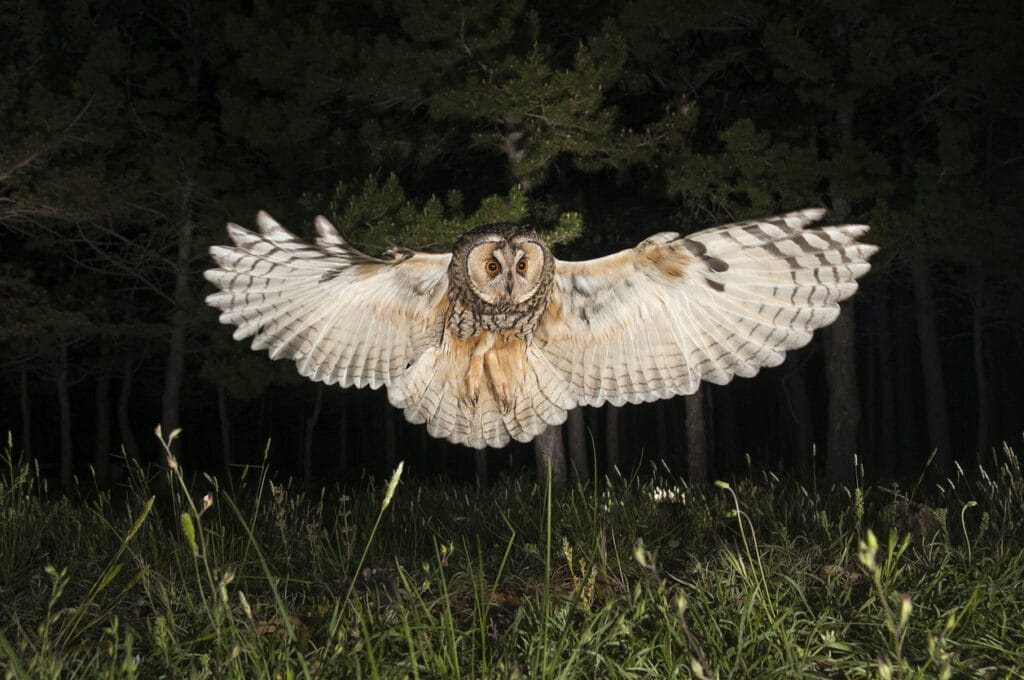
- Scientific name: Asio otus
- Length: 14 to 16 inches
- Weight: 8 to 15 ounces
- Wingspan: 39 inches
- Average life span: 10 to 30 years
- Status: Threatened
Long-eared Owls have dark feathers, with a buff pattern and black ear tufts. They have long ear tufts like the Great Horned Owl, but they’re usually much smaller.
Their face is orange-red with two white, vertical lines between their yellow eyes. On some occasions, those white lines will meet and can look like a ‘mustache’ on the owl.
For nesting, Long-eared Owls tend to be lazy. They take over abandoned nests in open dense conifer stands.
More often than not, they’ll nest next to open grasslands in Iowa. The open space is great for hunting small mammals like voles.
The Long-eared Owl likes to hunt on the wing. That means it’ll spend its day flying around looking for something to eat. When they find prey, they fly low to the ground, and they can slow down quite a bit. Sometimes the Long-eared owl will even glide in the air to catch prey.
Long-eared Owls hoot to communicate and males can also use a nasal bark when they feel threatened.
5. Short-eared Owl
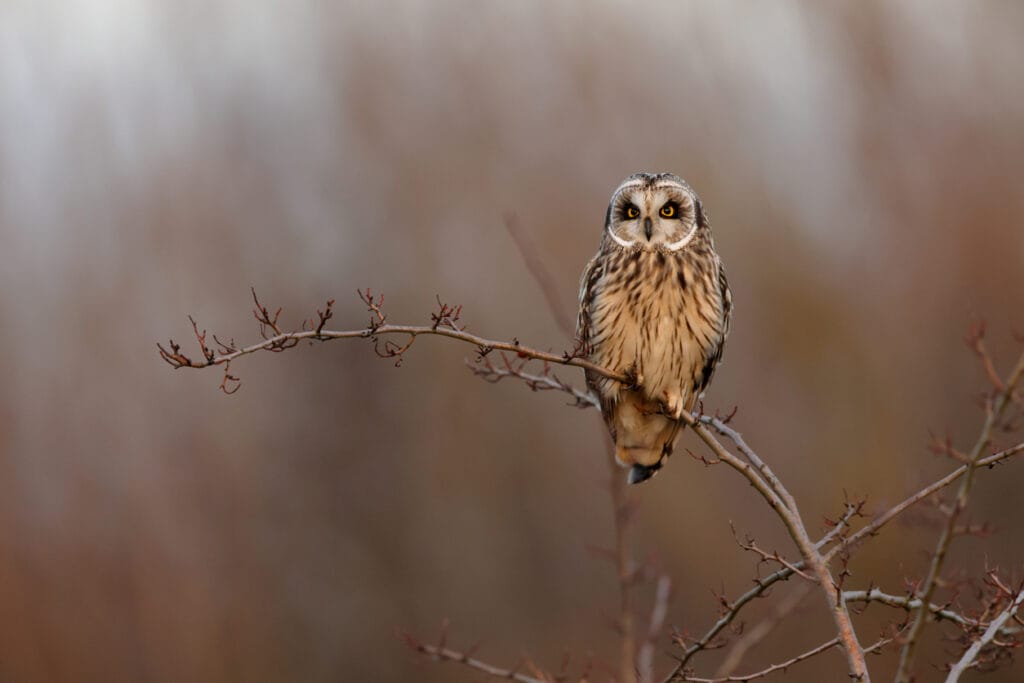
- Scientific name: Asio flammeus
- Length: 13 to 17 inches
- Weight: 7 to 16 ounces
- Wingspan: 40 inches
- Average life span: 8 to 12 years
- Status: Endangered
The Short-eared Owl is similar to the Long-eared Owl, with the main difference being their ears tufts.
It has burnt brown feathers on its back, while the belly is more cream and paler in males. They also have a distinctive puffy feather patch at the tip of their wings.
If you see it in the wild, you might notice that its flying pattern is a little ‘floppy.’ This is because of the way it flaps its wings in the air.
Short-eared Owls are also diurnal and like being in the sun much more than other owls. Though, they prefer hunting at dawn or dusk when it’s too dark for prey to see them coming. They usually feed on prairie voles.
You’re not likely to see them in Iowa. Although, some Short-eared Owls nest in Iowa, as their numbers are low. Because of their nomadic lifestyle, they can survive in any weather conditions, but they like to follow the warm weather in the winter months.
These owls most use their voice to attract a mate. They make a gentle ‘poo’ sound to signal that they’re available.
Males can also use their voices to scare off other males. They can make harsh barking noises to tell trespassers to turn back.
6. Snowy Owl
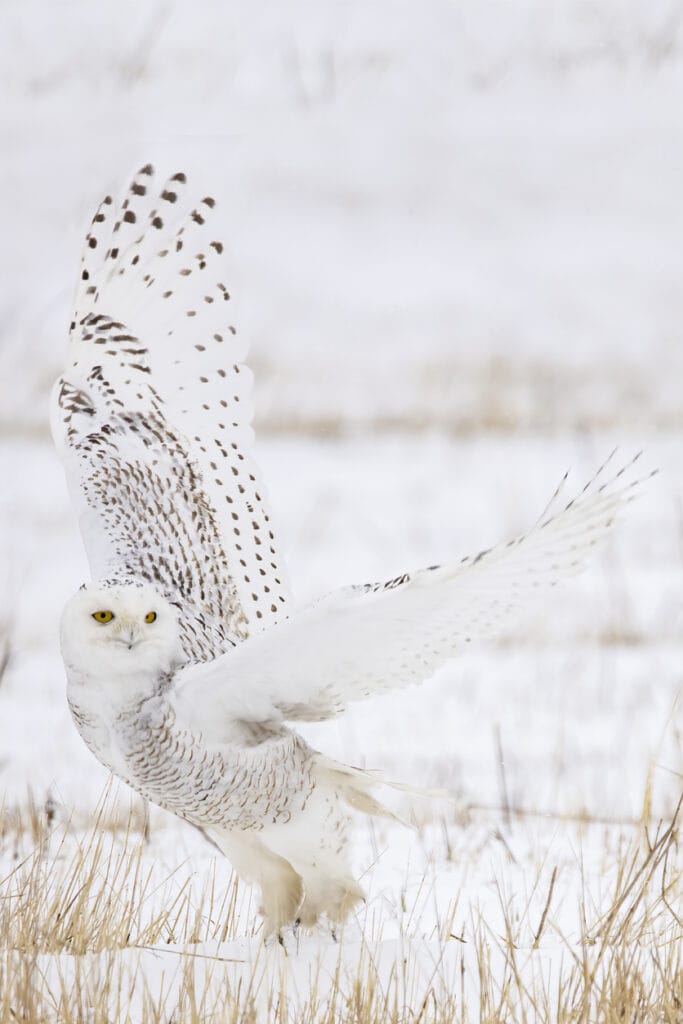
- Scientific name: Bubo scandiacus
- Length: 24 to 30 inches
- Weight: 30 to 70 ounces
- Wingspan: 65 inches
- Average life span: 10 to 17 years
- Status: Vulnerable
As the name suggests, the Snowy Owl has white feathers, with dark spots all over. Females tend to have more spots, while some males have almost none.
You can’t mistake them for other birds. The contrast between the feathers and their bright yellow eyes is very distinctive.
Moreover, they happen to be one of few owls that have long feathers on their feet. It helps the Snowy Owl walk in the snow.
Top Tip: They’re nomadic hunters, which means they go wherever their prey goes. That prey is usually an unsuspecting lemming.
Snowy Owls can survive in all sorts of climates, but they prefer the cold. They come to visit Iowa in the winter. You can spot them in open fields and airports.
Feathers can get in the way of keeping eggs warm, so female Snowy Owls found a solution. When they lay eggs, they develop large brood patches. The brood patch is an area with no feathers and high blood circulation.
7. Northern Saw-whet Owl
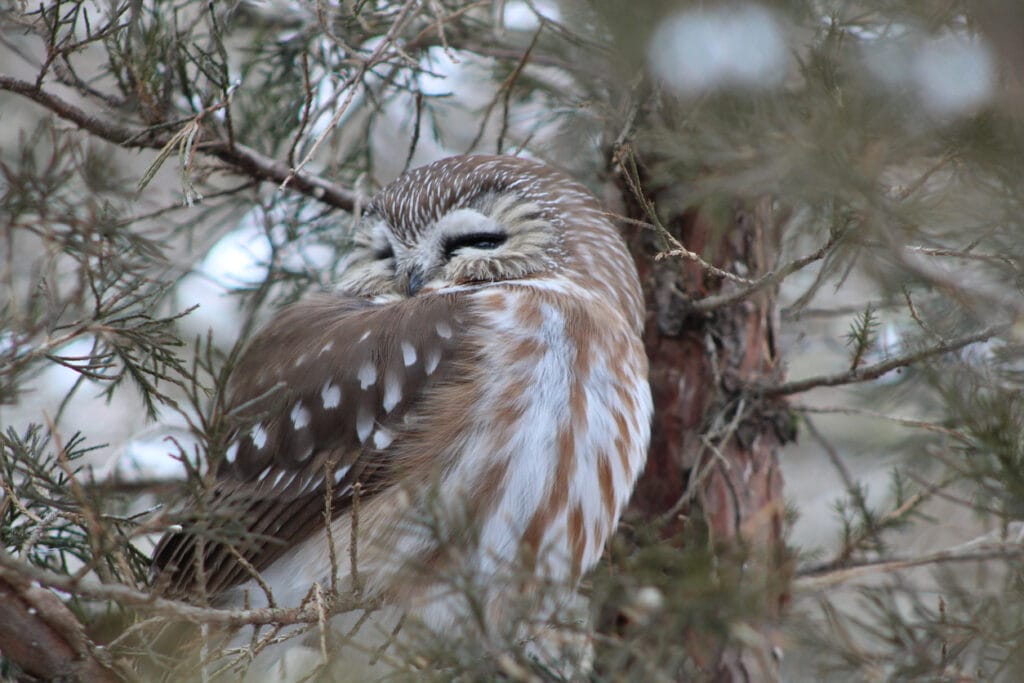
- Scientific name: Bubo scandiacus
- Length: 7 to 8 inches
- Weight: 2 to 5 ounces
- Wingspan: 18 inches
- Average life span: 7 to 16 years
- Status: Declining Numbers
The Northern Saw-whet Owl is the smallest owl in Iowa. On their backs, they have brown feathers with white spots. While on their belly, they have cream feathers.
Northern Saw-whet Owls are nocturnal hunters, and you rarely see them in the morning. They use their eyes and their hearing to catch prey in the dead of night.
To adapt to their environment, Northern Saw-whet Owls developed incredible hearing. Their ears have a special shape that allows them to hunt using only sound.
This owl makes an interesting noise. Instead of the usual ‘hoot,’ the Northern Saw-whet makes a ‘poo’ sound.
They sing in low whistle tones to attract a mate. And once they do, they like to nest in cedars and conifers.
Female Northern Saw-whet owls can lay five to six eggs at a time. After the female lays the eggs, it doesn’t leave the nest until the owlets are ready to fly.
That means it’s up to the males to hunt down the food, and they like hunting mice and other rodents around their nests.
8. Eastern Screech-Owl

- Scientific name: Megascops asio
- Length: 6 to 9 inches
- Weight: 4 to 8 ounces
- Wingspan: 24 inches
- Average life span: 8 to 10 years
- Status: Least concern
The Eastern Screech-Owl has the most variety when it comes to feather color. They can be gray, brown, or red.
Western Screech-Owls and Eastern Screech-Owls are almost identical. The only difference is bill color. It’s usually yellow in Eastern owls and black in western owls.
When it’s time for Eastern Screech-Owls to mate, they make a big deal out of it. The males will collect food and sing beautiful notes to the female.
They can also dance and raise their wings. And, sometimes before the male approaches the female, it’ll bow and wait for permission.
Author Note: Eastern Screech-owls prefer to nest in hollow trees. Usually, they’ll find abandoned woodpecker holes.
Males and females co-parent. They take turns watching the owlets and gathering food. Mostly, they eat insects and small rodents like mice. Owlets can leave the nest after about four weeks.
While the owlets are growing, one of the parents can drop a small snake into the nest. The snake won’t attack the owlets and will keep other predators away.
9. Barred Owl
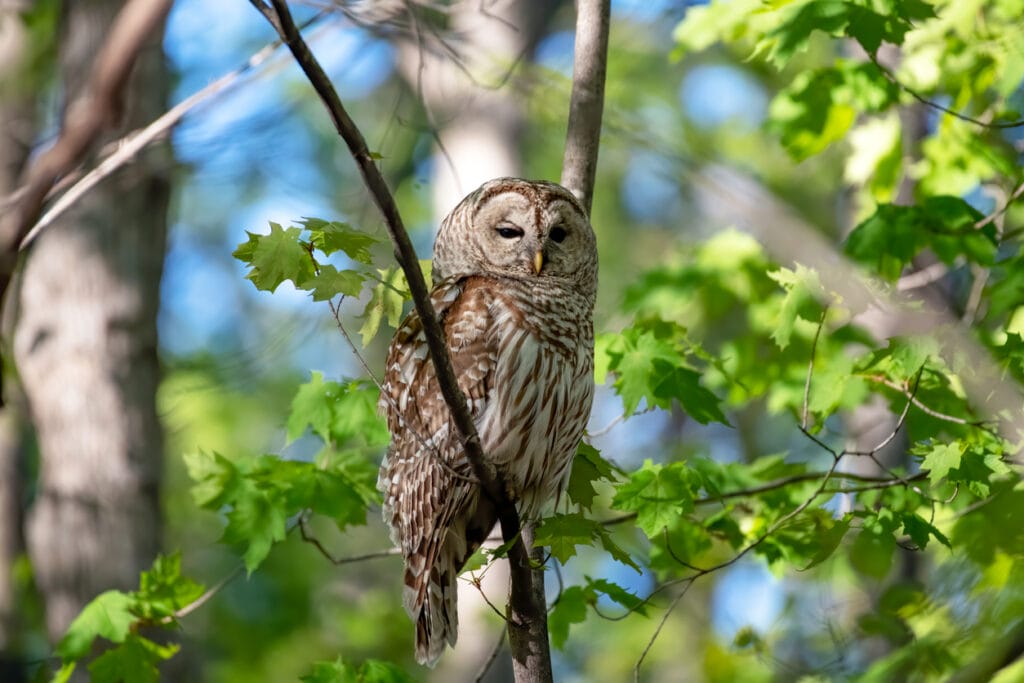
- Scientific name: Strix varia
- Length: 17 to 20 inches
- Weight: 16.6 to 37 ounces
- Wingspan: 43 inches
- Average life span: 8 to 10 years
- Status: Least concern
Barred Owls have mottled brown and white feathers. The feathers on their backs have a horizontal bar pattern, while the belly has vertical bars.
Its most striking feature is its large dark eyes. They also like to turn their heads 180° and stare at you with those eyes.
The Barred Owl uses its voice to mark its territory. It will often sit on a branch and sing to let everyone know that this area is off-limits.
Barred Owls are opportunistic hunters. That means they’ll perch on branches waiting for prey to come by.
This is when having large eyes comes in handy. Since Barred Owls prefer forests and wooded waterways, seeing prey can be tricky.
Top Tip: Their large eyes can see in the pitch-black night. And they’re extremely sensitive to the smallest movements.
Once they find prey, they’ll silently swoop down and grab it. They eat all sorts of prey, like mice, squirrels, snakes, and even other owls.
When it’s time to nest, they’ll build them in hollow trees. Females can lay three to four eggs at a time.
Wrapping Up
Iowa is a terrific place to see a wide variety of owl species. It has many forests and large open grasslands.
If you know where to look, you can find an owl all year long. Owls can be territorial, though, so it’s best to admire them from a distance.
FAQ
Waubonsie State Park, Yellow River State Forest, Neal Smith National Wildlife Refuge, Great River Birding Trail are all good places to start your hunt for owls.
The Barred Owl is recorded at the parks and forests listed above, so it is probably the most common species in Iowa.
To find out where recent sightings of owls have been, try eBird. You can search for the latest sightings or particular species or what has been seen in a certain area.
